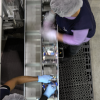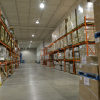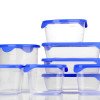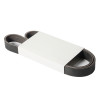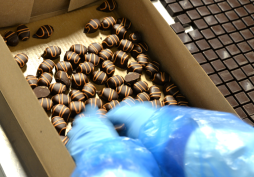4 Essential Food Safety Practices for the Co-Packaging Industry
Posted By: Karl Wirtz
Posted On: 11th June ‘ 15
When seeking a co-packager, a dedication to food safety is of the utmost importance.
Contaminated products hurt your business on multiple levels, damaging brand reputation and evaporating sales.
Co-Packagers that are committed to food safety strive not only meet, but exceed the highest industry standards with their own policies and procedures.
At a minimum, before engaging with a co-packaging company, ensure they hold food safety accreditations such as the Hazard Analysis Critical Control Point (HACCP) and BRC Food Safety certificates.
Beyond such accreditations, ask the co-packaging company how they consistently follow these four important food safety practices:
1. Allergen Control
It is critical for any co-packaging service provider to separate allergen containing foods from others – particularly peanut- and tree nut-free products and confections that contain nut traces.
The most effective method is maintaining a secured and segregated area or building for nut-free products.
But that’s not enough. Employees who work in this segregated zone must not enter the main facility, where non-restricted products are packaged.
A co-packaging company must ensure employees who work in allergen and non-allergen zones are easily identifiable.
For example, employees who work with nuts should wear distinct uniforms to stand out from other employees. This way, employees who wander into the wrong zone – and risk bringing allergens with them – will be quickly spotted.
2. Surface Cleanliness
The main principles of surface cleanliness are easy to follow, and include keeping all facility areas clean.
But in respect to food safety, surface cleanliness is directly related to allergen control and other forms of contamination.
A co-packager should regularly swab its lines. If – on the same line – employees packed bread yesterday and are going to pack chocolate today, the company should swab and test for allergens that the foods don’t have in common.
By doing so, bread-specific allergens don’t make their way into the chocolate.
This helps guarantee product label accuracy, ensuring customers do not eat ingredients that could harm them.
3. Cross-Contamination Prevention
Co-packagers must follow general cross-contamination prevention methods to ensure food safety.
Ideally, these should be based on internationally-recognized Good Manufacturing Practices (GMPs).
One of the most important GMPs is also the easiest to follow. Employees must not be allowed to switch or visit other lines, as doing so could cause cross-contamination.
Cross-contamination prevention must be a priority for your co-packer, or food safety can never be guaranteed.
4. Proper Employee Hygiene
The integrity of your products largely relies on employee hygiene.
Here is a sample of hygiene practices your co-packager’s employees must adhere to:
- Hand washing. Employees must use the designated hand-washing area – monitored by managers – after picking something up off the production floor, or leaving and re-entering.
- Glove and hairnet use. Employees must wear gloves to protect products. If the gloves are damaged, they will be quickly replaced. They must also wear hairnets and, if needed, beard nets.
- Jewelry restriction. Employees cannot wear jewelry, for both food and personal safety reasons.
Choose a co-packaging partner that diligently follows these food safety practices.
Ask for accreditations and, more importantly, documentation on how they implement sound food safety practices every day. By doing so, you can feel confident that your products and your customers are in good hands.
>> WG Pro adheres to rigorous food safety procedures in all of our co-packaging work. Contact us today to learn how we can help meet your business goals.
More from WG:
- Congratulations to David John Vongalu, Winner of This Year’s WG Leadership Award at Sheridan College’s Pilon School of Business - June 23, 2017
- 4 Future-Forward Co-Packing Trends - May 2, 2017
- WG Connects with Companies Eager to Grow in North America at the International Sweet and Snack Fair in Germany - February 23, 2017

